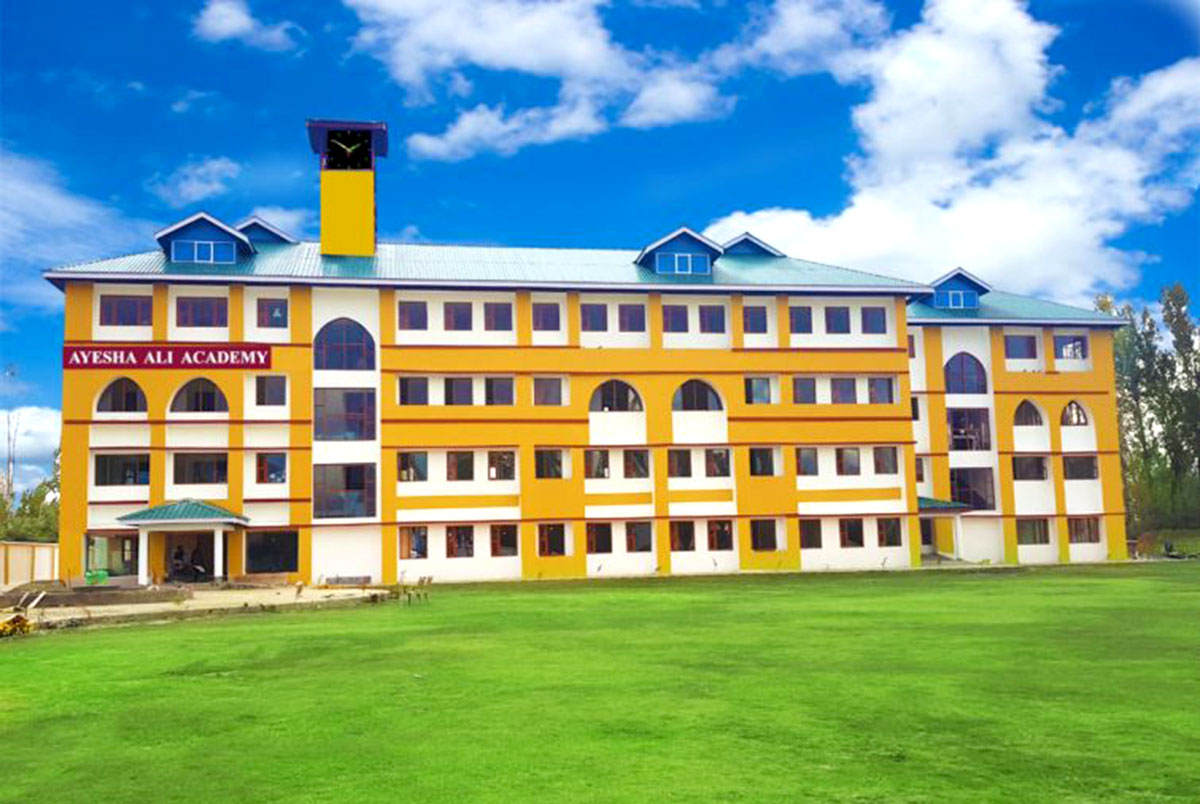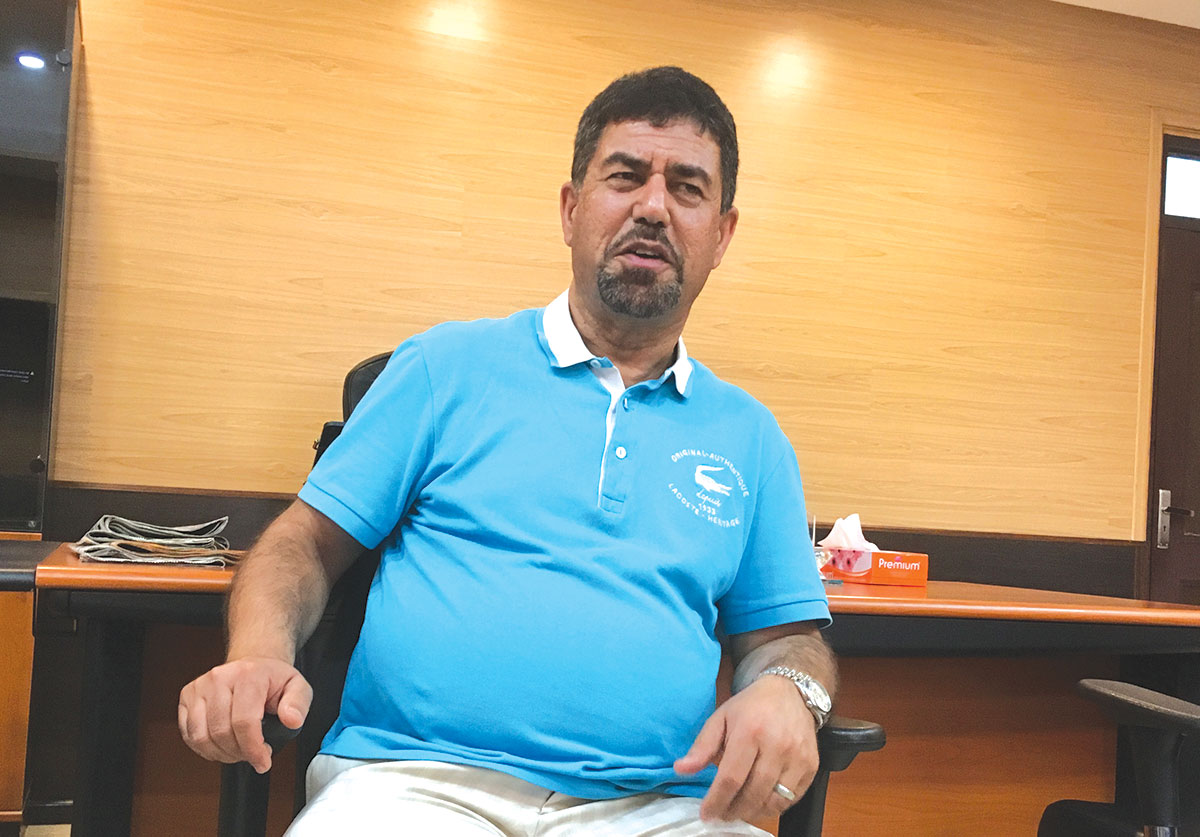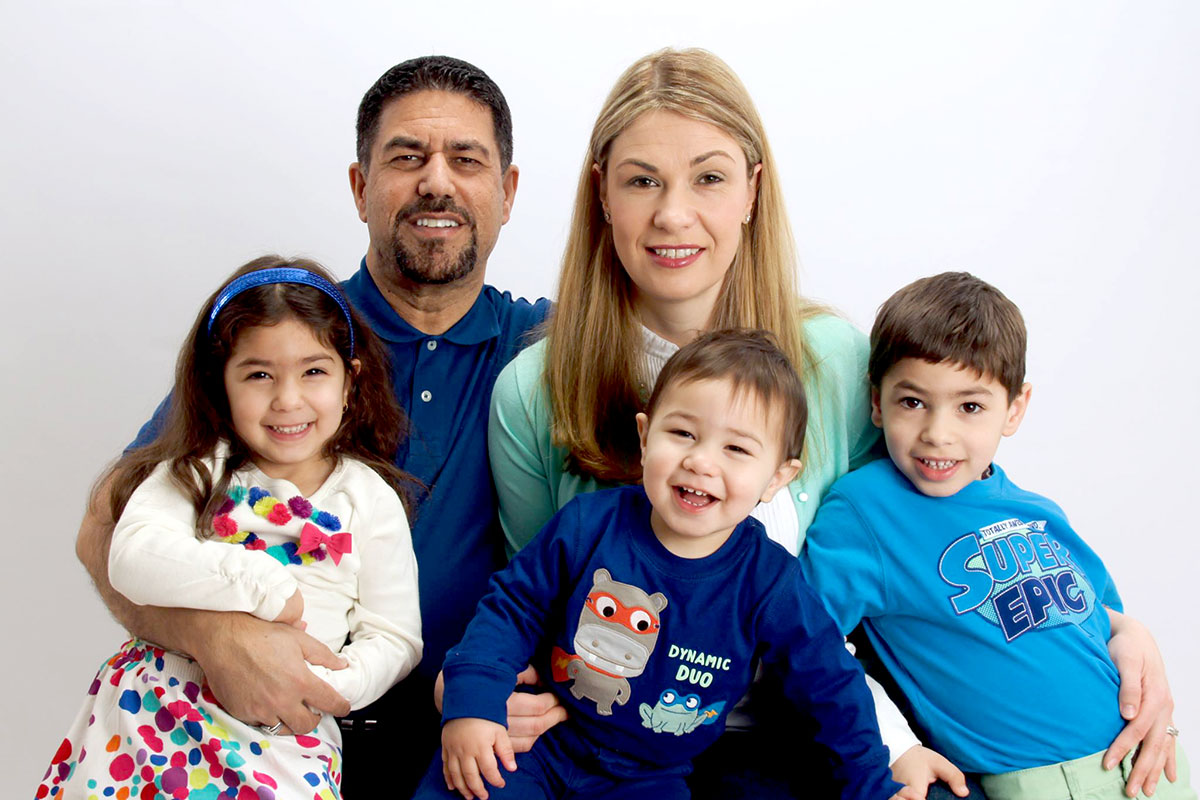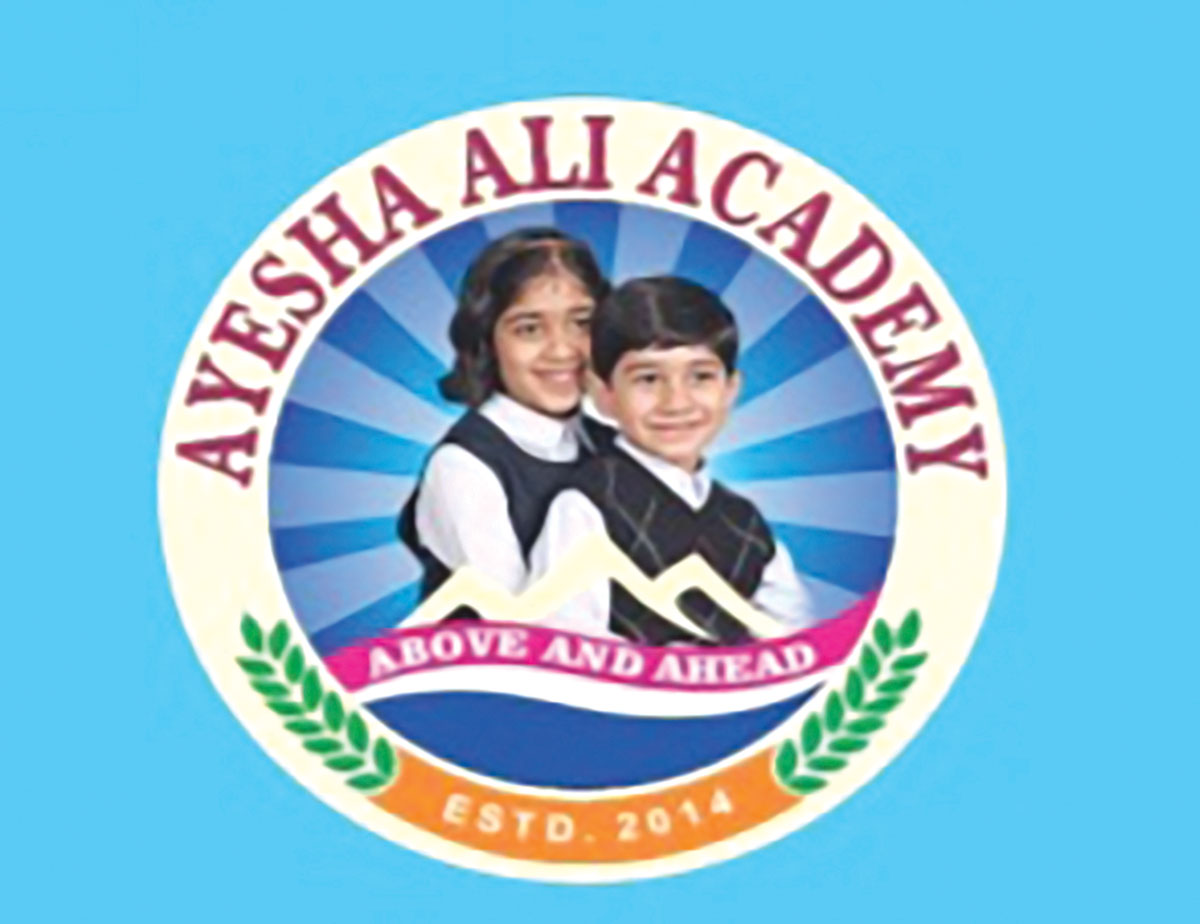Kulgam Village, Kanipora ,JAMMU & KASHMIR : / Columbia, Maryland, U.S.A. :
It was a scholarship that helped Feroz A Padder to get the best education and become an interventional cardiologist. Now the proud owner of a hospital in the USA with a yearly turnover of $10 million, he tells Masood Hussain his story and how he has started paying back by creating a world-class school, in the memory of two slain kids, an idea, if successful, he wishes to clone a piece each for every Kashmir district

I was born in a Kulgam village called Kanipora. My father had died when I was three years old. I was raised by my mother.
But I stayed in the village until I was in the fifth primary. In sixth grade, I was selected by Jammu and Kashmir government for a scholarship to attend a premier school in India. It was a fully funded scholarship.
My mother didn’t want me to go. She was crying. A Pandit lady was our neighbour whose son was my friend. Probably, she also did not want me to go. She took my mother to a faith healer to stop me from going but the Soun Saeb told my mother that’s she should allow me to go. Later, my brothers convinced her but it was very hard for my mother.
It was a major scheme of Sheikh Mohammad Abdullah and Afzal Beg. In order to give an opportunity for poor students from government schools, they devised the visionary scheme. Almost 1000 students who would pass their fifth primary in the first class would sit in a written examination and those who passed faced an interview by a panel comprising Director School Education and the principals of various colleges. Finally, three students were selected from each district. I was one among them in the very first batch in 1976.
That is how I studied in Punjab Public School and later in DPS, Punjab. It was the destiny that I became a medical doctor.
But I am not the only doctor in the family. The fifth sibling in my family, I have two older brothers, two older sisters and another brother, three years younger to me. Except for my oldest sister, my older brother was in tenth class when our father died. He took a job in the forest department to run the family. During Sheikh Sahab’s time, the medical college started admitting students after matriculation, so one of my older brothers made it to the medical school in 1976.

As my brother came to Srinagar, one of my older sisters also migrated. She was an art student but soon she changed her subjects, studied well and also joined the medical school. Later, my younger brother also took medical. Now we are four doctors in the family of which three pursued their studies from Srinagar. My younger brother studied psychiatry in South America; my older brother is a cardiologist and my sister is a family practitioner. We all work in the US.
After my brother went to London and later to the US, I followed him. Later, my sister and her husband came after me. Four of our families are in the US and our mother was with us all along till she died and we flew her body for burial in our ancestral graveyard.
My migration was dramatic. I finished my medical school in 1989 and was in the six months of house job when the situation deteriorated and my family wanted me to join them in the US. I did not get the US visa, so I went to the UK where I sat in an examination and started working. In 1992, I qualified for the US examination and went straight to America.
I was lucky again. I got jobs in higher level hospitals. I was in Boston where I did my residency. There I got a fellowship from the National Institute of Health, the biggest institute of health in the US. Later, I did my cardiology fellowship and combined with clinical fellowship. Then I went into more interventional cardiology in which I did further specialization from the University of Alabama, Birmingham. Once I came out after seven years of training, it turned out that I was the best fellow trained as a doctor in the whole country. I had almost nine interviews and eight job offers. But I came back to Maryland and took a job with John Hobbes University in 2000.
Soon, I realised that I didn’t want to work for anybody. I put in my papers and started my own practice, right before 9/11. As I grew gradually, I started hiring more people. Now, I have about seven cardiologists in my group and 19 physicians. I run my own group Padder Health Services with around 60 employees.
I have probably done thousands of invasive procedures. In our area, it is more competitive. We cover two to three geographical locations, and on average, I do around 400 interventions a year.
I am good at business ventures. I own a separate company Padder Reality which owns all the real estate that is under use of Padder Health Services. Right now, we have about the US $ 10 million yearly revenue and we are growing by 5-10 per cent every year. We are in talks with some people and if the process succeeds we will be taking over management of a chain of hospitals in the region, in which we already have strong footprints. That will help us reach the next level.
Dr Farooq Padder, my older brother, a cardiologist is an academic and works in New Jersey. Gulshan Nazir, my sister, is with me. A psychiatrist, my younger brother Tanveer does part-time with me. My wife, Edisa Tokovic, is a paediatrician and is originally from Bosnia but was raised in Michigan, US.
I got scholarships right from the start and whatever I am I owe this to Kashmir and its people. I want to produce thousands of myself. We can give education to the poor students the way I got. I want to pay back and contribute in any way. I run a charitable organisation which is basically our family foundation. We give scholarships to students, in memory of my mother. It has a marriage fund for the orphaned girls also.

It was a fully funded education that changed me. So I want to use education to replicate the same kind of stories. Finally, I decided to build a school – from nursery to twelfth grade – in Kulgam. It is already into operation.
We will give a scholarship to one-fourth of the enrolled students who are smart but are either orphaned or their parents are less privileged. If this brand and the business model works, I will replicate the same models in the other districts, hopefully in Baramulla and Srinagar, soon after.
The building has around 50,000 sq ft built-up the area and I have probably spent around Rs 8 – 10 crores on it. It’s my personal investment.
Once the school starts, our Foundation will fund it till it becomes self-sufficient. It eventually will be a private entity that will reinvest its excess earnings to fund the education of one-fourth students enrolled in it.
I have tied up with one of America’s oldest school systems to create a curriculum and teaching system which is global and the best. We have people in the USA who are willing to help us in imparting education and training the teachers. I pray the initiative is a success.
Behind the school is a story, a tragedy. It was in 2006 when my (first) wife met a road accident and died along with our two kids. She was from Pakistan; her name was Amira Abbas. She was a cardiologist too. Ayesha, my daughter, was nine years old, and Ali, my son, was five.
Ayesha was born on September 5, 1997, the same time when Lady Diana died. The very next day, Mother Teresa died. I used to tell her that God created you for a reason, not knowing that she would not live long. She was brilliant, religious and a loving daughter. She completed the Quran at age seven and there was a party for her scheduled for November 5. But she died on October 31. She had been selected for a kid leadership three-week course and I got the selection letter a week after her death.
When someone was driving me back from the accident spot, that time, I decided that whatever money I had saved for my children’s future, I will create an institution in their name. So I have named this school Ayesha Ali Academy. That’s why we initially created the Ayesha Ali Foundation.
I met my second wife in Washington DC where she was doing a residency. She is very much younger than me. We married in 2008. We have three kids – two sons and one daughter. Ibrahim, my older son, tells me: “God gave you two children back and one more in bonus.”
I tell my children that the two countries had to go to war for us to get married. It is unfortunate both these conflicts occurred. Had there been no crisis in Kashmir I might not have migrated. Same is true with my wife. She has been to Kashmir a few times. I come here often and I go to Bosnia too. But the only difference is that it is much militarized here unlike Bosnia.
I even thought of constructing a special hospital in Kashmir, but later, I thought I have to be physically here for that because it was such a big project. Since I have little kids, I didn’t want to take that chance. But I still have some ideas and I have been thinking about it. But if the school goes as per the script, we could get into health care too.

We don’t even need a hospital to start with. I had a major polyclinic where we have a big infrastructure and where we have different doctors working under the same roof. But rather than being a government institution, it’s a private institute and most of the doctors have some stakes in it. Hopefully, we may try to develop that here in Kashmir.
In Kashmir, hospitals are understaffed and doctors overworked. There is less awareness among people about the preventive medicines. The absence of medical insurance is a crisis that would prevent quality investment in the health sector.
source: http://www.kashmirlife.net / Kashmir Life / Home> Cover Story> Diaspora / by Masood Hussain / March 27th, 2019








